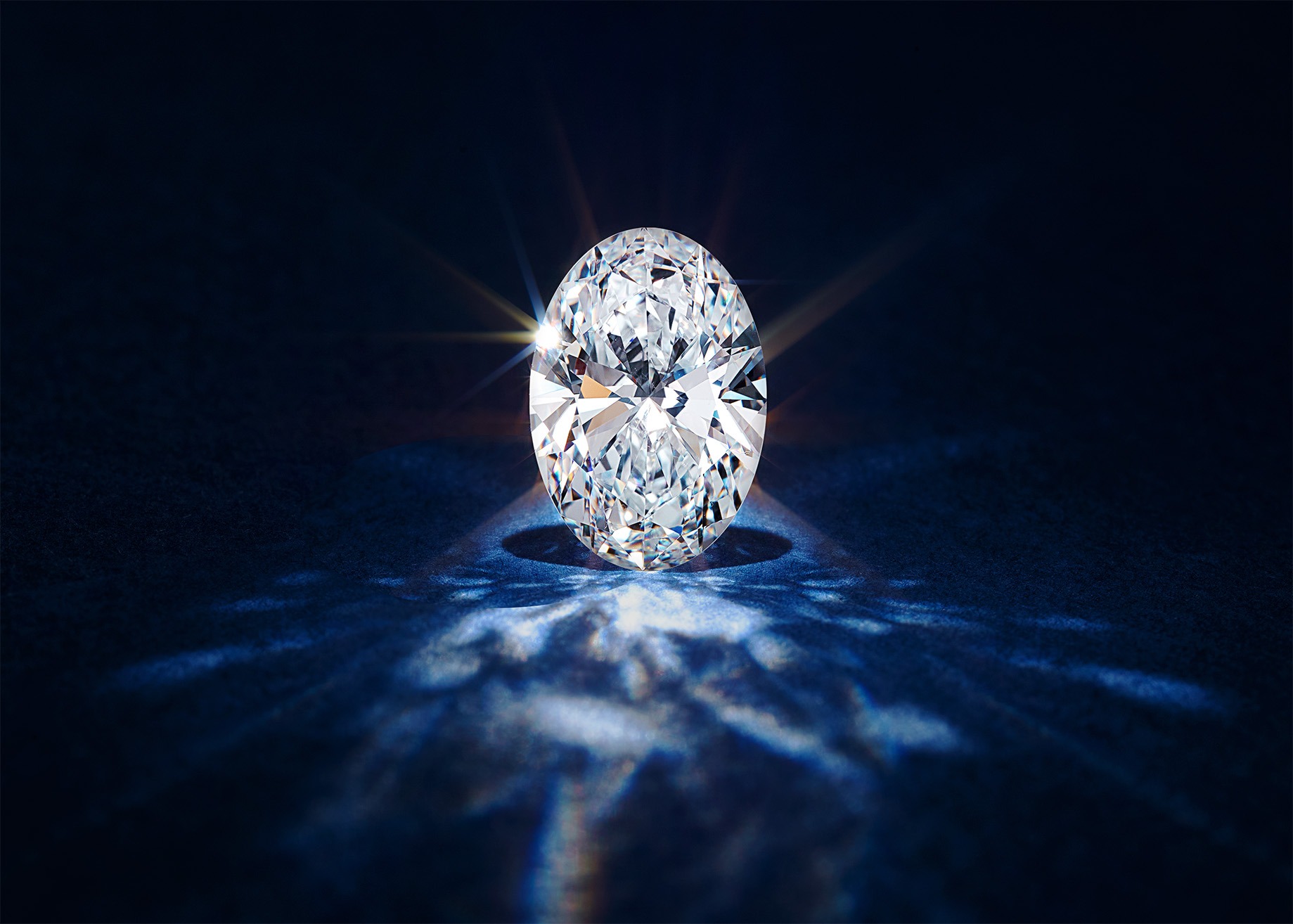From diamond cut grading to interesting facts about types of diamond cuts, let’s look at the various topics you should know when selling diamonds based on an important factor of diamond quality.
One of the most popular gemstones throughout history is the diamond. Durable, optically pleasing, and possessing a unique heirloom quality, diamonds are highly prized. According to the 2021 Jewelry & Engagement Study by The Knot, 86% of engagement rings contain a diamond center stone. Convincing a consumer of the appeal of a diamond is not particularly difficult. The bigger challenge comes in educating them on what contributes to their diamond’s quality and overall value.
The 4Cs of diamonds are the factors that affect the value of every diamond — cut, clarity, color, and carat weight. Today, we are diving into diamond cut to gain an understanding of what important points should be brought to your customers’ attention. The other factors will be expanded on in subsequent articles throughout the year.
What is Diamond Cut?
A diamond’s cut, or make, is the proportions and finish of a polished diamond. Oftentimes, the cut can also refer to the shape, but, in truth, it is how well the facets interact with light and contribute to the overall optical efficiency of the stone. The diamond’s proportions are the size and angle relationships between the facets and the different parts of the stone. The finish includes polish and details of facet shape and placement. The more successful the diamond cutter is in balancing these considerations, the more valuable the stone will be.
 In 1919, a young mathematician named Marcel Tolkowsky wrote his master’s thesis on the proportions for round brilliant-cut diamonds. This became the basis for what is now known as the ideal cut. He began his study by asking pedestrians in London which diamond among a small selection featuring different makes was the most appealing. Those responses combined with the input of the diamond cutters in his family’s business helped confirm the proportions of the best-looking diamond. Then, he applied math and physics to prove why.
In 1919, a young mathematician named Marcel Tolkowsky wrote his master’s thesis on the proportions for round brilliant-cut diamonds. This became the basis for what is now known as the ideal cut. He began his study by asking pedestrians in London which diamond among a small selection featuring different makes was the most appealing. Those responses combined with the input of the diamond cutters in his family’s business helped confirm the proportions of the best-looking diamond. Then, he applied math and physics to prove why.
Diamond Cut Grading and Appearance of a Diamond
While the American Gem Society was the first to create a diamond cut grading scale, the Gemological Institute of America (GIA) has the most widely accepted scale used in the industry today. GIA bases their scale on the proportion between the crown and pavilion in relation to the table percentage. Their scale includes the following ratings: Excellent, Very Good, Good, Fair, and Poor. The GIA scale is only used for round, brilliant-cut diamonds because there is a much wider range of proportions used for fancy-cut diamonds.
Fun Fact! Diamond cut is the only factor of diamond grading determined by man. The other factors depend on how the diamond grew from nature.
The vast majority of diamonds on the market today have a cut rating of either Excellent or Very Good. A poorly cut diamond may appear to have less sparkle and shine than those of a higher quality.

Some poorly cut diamonds are a result of incorrect proportions. If the diamond is cut too shallow or too deep, then light will leak out of the bottom of the diamond, which diminishes the sparkle.

Other poorly cut diamonds are a result of asymmetrical faceting. Cutting the facets is a very precise process. If inaccuracies occur during faceting, such as inconsistent sizing or incorrect numbers of facets, then light will not travel through the diamond correctly and have a poor effect on the visual appeal.
When done properly, a diamond’s cut provides optimal brilliance, fire, and scintillation — similar but very distinct qualities to describe the play of light observed from a diamond. Brilliance refers to the intensity of both the internal and external reflections of white light when viewing the diamond from the table or top. Fire, or dispersion, describes the flash of color you see when light is reflecting from a polished diamond. Scintillation is the appearance of the light from the diamond whenever there is movement from the stone, the light source, or the observer. When someone refers to the sparkle of a diamond, they mean scintillation.
Diamond Cuts to Know
Customers, particularly brides, often have a cut in mind when they are shopping for a diamond. Here are a few diamond cuts to discuss to guide the conversation.
Brilliant Cut
This is one of the most popular diamond cuts as it is cut to maximize the brilliance in a round-shape diamond. It has 57 facets (58 if the diamond has a culet).
Rose Cut
One of the oldest round diamond cuts that has recently seen a surge in popularity is the rose cut. This romantic cut stands out from all others as it does not have a pavilion and contains a domed top. With only 24 facets, it is cut to resemble the narrowing spiral of a rose’s petals.
Step Cut
Step cut is a sleek and modern option featuring parallel facets. While this cut does not reflect the stone’s brilliance in the same way that a brilliant cut does, it is one of the best ways to show off the clarity of the diamond. Emerald and asscher shapes are the most common step–cut diamonds.
Old European and Old Mine Cuts
These cuts provide a vintage appeal as they were very popular in the Art Deco period of the 18th and 19th centuries. Both cuts feature larger facets that reflect light differently than the brilliant cut. Old European cuts tend to have a round shape while old mine cuts tend to have a cushion shape.

Three Facts to Know About Diamond Cut
Now that we’ve provided a brief overview of diamond cut, let’s explore a few facts that might help you in the sales process.
1. A round, brilliant-cut diamond is cut to give the greatest optical performance.
While all shapes and cuts of diamonds have their own unique visual appeal, the round, brilliant-cut diamonds are best suited to maximize the brilliance, fire, and scintillation of the stone, which is why it is the most popular choice.
Click here to learn more about GCAL 8X Ultimate Cut Grade Lab-Grown Diamonds.
2. Round diamond cuts are consistently popular, but different fancy cuts rise and fall in popularity according to trends.
According to The Knot, 41% of engagement rings contain a round diamond with oval coming up as the second most popular at 19%. While oval is trending right now, princess, pear, marquise, and emerald cuts have also found their time in the spotlight. When it comes to the fancy cuts, optical preference is the most important determining factor when making the sale.
3. Diamond cuts with points — such as the points of princess, pear, and marquise diamonds — should result in extra consideration from both the bench jeweler and the sales associate.
While diamonds are known for their durability, it is still possible to chip a diamond, especially if it has points. When handling the diamond with tweezers at the sales counter, be mindful of where and how tightly you hold the diamond to protect the points from pressure. Certain mountings are also better suited for these diamond cuts to protect the points from hard impacts.
Diamond Cut: Only the Beginning
While this information should provide a solid foundation when beginning the conversation with your customers about diamond cut, we have only scratched the surface. However, in the end, the most important factor when it comes to diamond cut is how your customer appreciates the look of the diamond. When they love the way a diamond flashes and sparkles, describe the cut to connect the value to the stone.
This is only the beginning. We look forward to diving into the rest of the 4Cs and how you can tell the ultimate story when selling diamonds.

Olivia Billet
Product Manager, Diamonds
Olivia attended the University of Louisiana at Lafayette, graduated with a bachelor’s degree in Public Relations, and is certified through GIA as an Applied Jewelry Professional as well as a Certified Sales Associate through the American Gem Society. Years of digging through her mom and grandmothers’ jewelry boxes lead to a love of diamonds and gemstones which she leans on every day in her role at Stuller.
